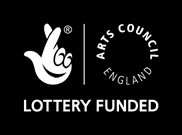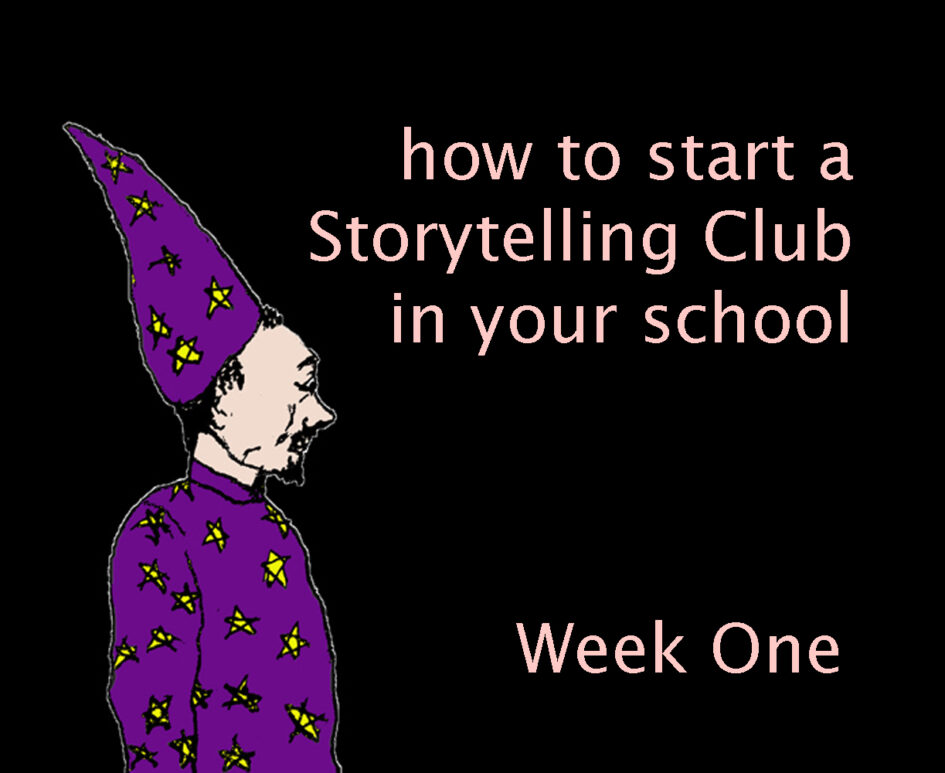Each self-contained unit builds different skills and practises the techniques needed to create and perform stories. Each unit can fill more than an hour session, so take things slowly and enjoy the creativity and don’t be afraid to divert en route.
What Makes Storytelling Different?
The first and most important thing is that an oral storyteller does not need to remember the words of their story. Most storytellers ‘remember’ a story as a series of scenes or pictures in their heads. They bring these pictures up in their mind’s eye and tell the story by describing the scenes in words appropriate for their audience. A good storyteller communicates with the audience, using their reactions to concentrate on the parts of the story that interest them most. In fact storytelling is a two-way process. A good storyteller lets the audience help shape the tale.
Traditional stories are heavily patterned, and storytellers use their knowledge of these patterns to reshape tales.
Most children, when you ask them, say ‘I don’t know any stories’. But in fact most children can remember a good few tales. So these workshops use the traditional stories that most children have heard, even before they start school.
Group Dynamics
One of the most difficult tasks when running a storytelling group in school is to create an informal, supportive, non-hierarchical club where each member gives equal value to the contribution of every other member and each has the confidence to contribute.
You need to break down the barriers between different ages and abilities, and pupils pre-conceptions of what they and the other club members are ‘good at’.
One thing that will really help with this is the club meeting space, how it is arranged and decorated.
• Meet in a neutral space – not one of the group’s classrooms
• Meet somewhere where you won’t be interrupted or overlooked, so everyone can make a noise or be extrovert without feeling self-conscious.
• Create a cosy space-within-a-space, perhaps with drapes
• Sit in a circle, on the carpet or chairs, so there is no recognised leader
• Always allow a little time for the group to talk to each other and catch up on the gossip – this will help members make friends and connections
• Most of all, make the group aware that storytelling is also about listening, so once the activities begin they need to concentrate on the task at hand.
Be prepared for diversions to come up along the way and to follow them. These workshops are a starting point and as the group get to know each other they will take more control of how they develop them to suit their own wants and needs.
SO START BY ASKING THE GROUP TO HELP CREATE THEIR OWN STORYTELLING SPACE – This will give them ownership of their own club.
This first unit concentrates on the technique of Visualisation…
Daddy Shark
Starting with a simple, 8 word song, that has a story lurking behind the lyrics. The idea here is for everyone to learn to sing the song and do the actions and then share their ideas about the scenario.
There are plenty of versions of this on YouTube. Watch a few before to get an idea of the tune (it won’t take a lot of learning). Warning: There are a few ‘boring’ American versions where no blood is spilt. These don’t tend to go down so well, for obvious reasons, the best stories aren’t necessarily politically correct.
Introduce the exercise by telling the group the eight words in the song:
baby
bob (as in bobbing up and down)
daddy
gone
granny
lady
shark
swim
Ask them what they expect to happen!
Then start the singing. Here are the lyric (left) and actions (right in italics) to the version we use:
Daddy shark – do, do, do, do be do open & shut arms as this shark
Daddy shark – do, do, do, do be do
Daddy shark – do, do, do, do be do
Daddy shark – do, do, do, do be do
Baby shark – do, do, do, do be do open & shut hands as this shark
(repeat 3 times, softly)
Granny shark – do, do, do, do be do open & shut fists as this shark
(repeat 3 times, gruffly)
Lady swim – do, do, do, do be do do ‘breast stroke’ arm moves
(repeat 3 times)
Daddy shark – do, do, do, do be do open & shut arms
(repeat 3 times)
Lady swim – do, do, do, do be do do one-armed breast stroke
(repeat 3 times)
Baby shark – do, do, do, do be do open & shut hands
(repeat 3 times, softly)
Lady bob – do, do, do, do be do bob up & down, no arms
(repeat 3 times)
Granny shark – do, do, do, do be do open & shut fists
(repeat 3 times, gruffly)
Lady gone – do, do, do, do be do shake head sadly
(repeat, slowing down to the end)
All together sing the song with the actions a couple of times.
Then (1) Discuss the scenario with the whole group. Some sample questions are:
Was it by the beach or in mid-ocean?
Why was the lady swimming?
What/who else was in the water?
Was anybody watching?
When they have arrived at ‘their’ story…..
(2) Divide the story into scenes.
(3) Break into smaller groups – as many as there are scenes.
(4) Each group discuss their scene in more detail, and then draw it. Stress that they cannot re-invent the story, their one scene must still fit in with the general scenario.
(5) Each small group should then practise telling the part of the story depicted in its scene, with each member contributing at least a phrase. Make sure they are sitting down and telling, rather than standing up and acting-out the scene. Help them discover how they can use the drawn images as cues to ‘flesh out’ the tale.
(eg: the waves were crashing onto the beach, the clouds were darkening in the sky)
(6) Remind the whole group that this is about storytelling, not story-acting.
(7) Finally, get the whole group to retell the whole tale, making sure they are listening to each other rather than trying to rehearse their own bits.
You could get them to sit in a circle, with the small groups arranged in order so that the story is shared around the circle.
This is more friendly than getting each small group to stand up in the front with the rest as audience, and stresses that storytelling is a co-operative exercise.
Funded by





